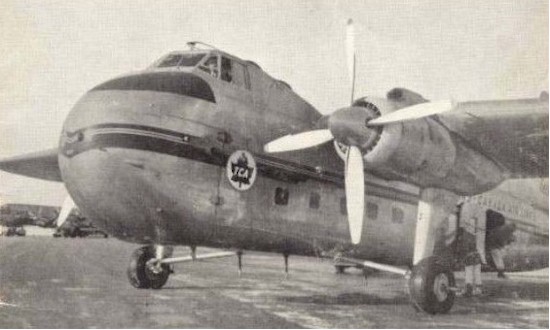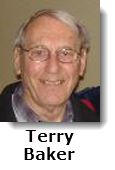|
|
|
Bill Norberg of Winnipeg sent us this in January 2001. I wonder how many people remember the year TCA purchased 3 Bristol freighter aircraft. The year was 1953 and CPA had applied to the Government to operate a transcontinental air freight service. At this time they were still limited as to the number of passenger flights they could operate. TCA did not have any freighter type aircraft at the time and any airfreight was carried in the belly compartments. As I remember it, there was to be a hearing to decide this issue. TCA immediately set about to acquire a true airfreight capability. They elected to purchase 3 Bristol freighters from the UK and modify them for Canadian operating conditions. The aircraft were ferried from the UK by TCA pilots. In order to have the necessary communication systems for these flights a set of radio equipment was sent over from Canada and temporarily installed for the flight. When the first aircraft arrived in Canada the radio equipment was removed and sent to the UK for the next flight, etc. These aircraft arrived in Dorval in the fall of 1953 to have the necessary modifications carried out. The modifications were extensive and included a complete radio communications system, a completely new flight instrument panel, heating and ventilating system, interior modifications to permit the proper loading of heavy loads and a propeller auto coarsening system. There was a tight schedule for this modification program as the aircraft had to be available for operations by January 1, 1954. These modifications were barely underway when it was determined the aircraft wiring system did not meet TCA standards. As a result every piece of wiring in the total aircraft was removed and replaced by AN standard wiring. This action required a complete set of engineering wiring drawings which had to be developed as the wiring was being replaced. We could not afford to await completion of the drawings. The schedule was very tight and this wiring replacement decision placed the whole program in jeopardy. The sight of literally armloads of new wiring, all with small white tags on their many ends hanging out of the cockpit windows is something I will never forget. It looked hopeless. The final electrical wiring diagrams were delivered to us at midnight of the day before the first ground run was scheduled to occur. Every able bodied person in the Dorval Base who knew anything about electrical wiring was pressed into service. Many of us worked 16 hour days for weeks and on one occasion I worked 24 hours to complete the task. The aircraft were completed for the January 1, 1954 deadline although they did not see service until sometime later. The aircraft was without a doubt one of the ugliest I have ever seen. The bulbous nose with its big doors with the cockpit perched on top. A large fixed undercarriage, and a very severe design concept made it unusual to say the least. There is one still available to see in the Western Canada Aviation Museum in Winnipeg. It had Bristol sleeve valve power plants built in true British design. Why use 4 bolts when 8 will do? They were however successful power plants as they never had an in-flight failure as long as they were in TCA operation. |
 |
|
Editors' Note: The 3 Bristol freighters, CF-TFX/TFY/TFZ, were found unsuitable for TCA routes and were sold in 1955. CF-TFX went to Wardair and remained in service until 1968. It was donated to the city of Yellowknife and has been mounted on a pylon near Yellowknife airport (YZF) for many years. It was the first wheeled aircraft to land at the North Pole. Related information and 2001 photo at: spectacularnwt.com/attraction/bristol-freighter www.airliners.net/photo/Wardair-Canada CF-TFY went to Winnipeg-based Transair and CF-TFZ to Pacific Western Airlines. Both were written off in non-injury accidents 3 weeks apart in May and June 1956. Transair was acquired by PWA in 1979. |
|
Continuation of the Air Canada nee Trans-Canada Air Lines History. Started in NetLetter #1483. Source: Air Canada 75 years of innovation 2004.
More next NetLetter. Editors' note: If any readers have any memories about any of the events to share, they would be welcomed. |

